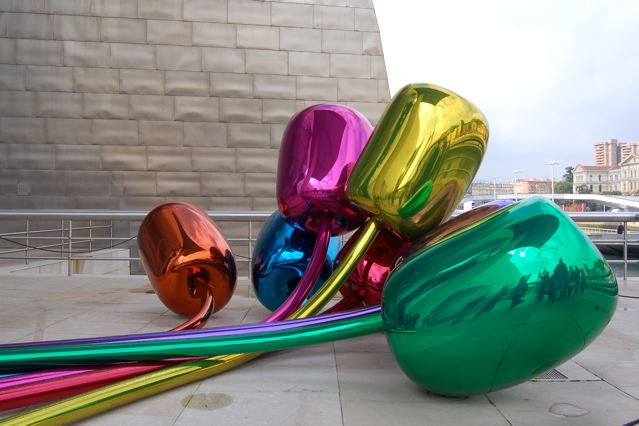Have you heard of Luigi Russolo and The Art of Noises? I confess I hadn’t, until I visited the current exhibition at the Lewis Elton Gallery on the University of Surrey campus. Just Luigi’s name and the ambiguous title, Art of Noises, intrigued me and hence a visit to ‘The Weak Force’ seemed promising.
Assuming that the exhibition was ‘conceptual art’ I wasn’t expecting to see a room full of canvases, hung with care at one metre intervals. And as a bit of pre-prep, I had a quick phone conversation with one of the artists, Andy Thomson, who told me that the gallery had been pretty much emptied to make way for around a dozen or so galvanised buckets suspended from the ceiling. OK, I thought, this will certainly be different.
“Check out Luigi Rossolo,” Matt advised. “That gives you some of the background to our thought process.”
So back to dear Luigi - what was his influence on the bucket scene? Luigi was an Italian Futurist painter and composer and author of the manifesto, The Art of Noises, written in 1913. (By extraordinary coincidence the press view of this exhibition was exactly 100 years to the day that the manifesto was published). Following a performance of futurist music in Rome by composer Balilla Pratella in 1913, Luigi became intrigued, almost obsessed, with the meaning of noise and how it could become an art form. Where much of Futurist painting and sculpture at that time relied on past techniques to articulate modern life, Russolo sought to radically break with the past by devising new methods of sound expression.
The installation at the Lewis Elton Gallery weaves mesmeric sound into its collaborative web and revisits Luigi’s ‘sound intoners’ or, here’s a good word, his intonarumori - meaning:
The Intonarumori were a family of musical instruments invented in 1913 by Luigi Russolo. They were acoustic noise generators that permitted to create and control in dynamic and pitch several different types of noises.
|
But instead of the ‘intonarumori’ Samson and his fellow artists, who have travelled from New Zealand, Australia and Canada, have suspended buckets in the gallery as sound conductors. That’s all there is - buckets, wires and plenty of - well, space. Using sounds recorded in Canada, China, NZ, Uzbekistan, Greece, Czechoslovakia, Germany and Korea the artists spent a week positioning the buckets at different heights and planning how best to use the sounds to create a sound and textual composition for the Surrey quotidian.
It might sound crazy and it’s quite hard to explain but I enjoyed just sitting quietly and being in the space. The sounds are industrial, not melodic, and they come from different areas of the gallery at varying intervals, so there’s an element of anticipation and surprise. This is not an exhibition to rush in and out of, you have to go with an open mind and just - sit, listen and enjoy the moment. Just try it. Ambient sounds outside the gallery are also all part of the experience - a trolley trundling past, the brakes of a lorry, the scrape of a bike against railings.
The Weak Force is part of the Guildford International Music Festival, which intrigues me a bit. Music then, not art? I’m not sure - it is certainly about noise, but it’s in an art gallery, so does that make it art? So there is another discussion to have. Is music just noise, and is noise art? - The Art of Noises might answer some of those questions, and while you wait to read it, this exhibition will spark off many other ideas in that direction.
Weak Force is made under an umbrella project UFT which originated at AUT New Zealand. Visit uft-gravity.com
The Weak Force collaborative exhibition is at the Lewis Elton gallery until Thursday March 27th. Entrance is free. Visit http://www.surrey.ac.uk/arts/visualarts/lewiseltongallery or phone : 01483 686641


No comments:
Post a Comment